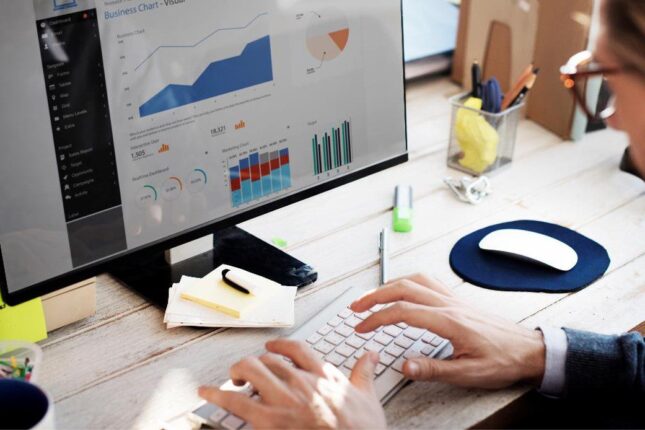2 popular solutions
Whether you’re just starting or in the middle of your search, you may have already heard of Microsoft Power BI and Tableau. These are both extremely popular BI solutions with intuitive interfaces and powerful built-in visuals. However, you probably want to know how they stack up against each other and more importantly, against your BI requirements. This article explores some of the key differences between the two tools.
| Power BI | Tableau |
|---|---|
| Power BI is the business data analytics tool to analyze the business and derive insights from it. | Tableau is the business intelligence and data analytics tool for generating reports and data visualization with high flexibility. |
| Power BI is integrated with Microsoft Azure, it helps in analyzing the data and understanding the trends and patterns of the product/business. | Python machine learning capacities are inbuilt with Tableau, making it efficient for performing ML operations over the datasets. |
| Power BI provides different ways to transform data. You can transform data before loading it by clicking Get Data on the Power BI Desktop, selecting a data source and choosing Transform. This will put you in Power Query Editor. | In Tableau you can use the Data Source tab or calculated fields to do limited transformations. Or, you can use Tableau Prep for more complex transformations. The downside is that Tableau Prep is a separate tool from Tableau Desktop. |
| Power BI offers multiple ways to add filters to reports or pages. You can employ slicers and use filter icons on visualizations. You can also set drill-through filters in Power BI. | Tableau provides dashboard actions that can filter data in multiple ways. |
| Power BI’s Q&A also provides the ability to type natural language questions about a dataset and get responses in the form of visualizations. The Q&A feature is available in both Power BI Desktop and Power BI service. | Tableau’s Ask Data uses natural language to ask questions about your data. |
| In Power BI there is an option to drag-and-drop, to build joins (relationships) under the Modeling tab or by choosing the data diagram icon (on the far left of the Power BI Desktop screen). Overall display and functionality are better in Power BI Desktop. | Basic data modeling (joins/relationships, UNION, ALL, etc.) can be done in Tableau Desktop’s Data Source tab, but it is limited. |
| In Power BI you can group by year, quarter or month. | Tableau has discrete or continuous dates. For example, you can easily group all Q4’s, regardless of year. This feature can be useful to look at seasonal or monthly trends, regardless of year. |
Comparing Microsoft Power BI vs Tableau
When comparing Microsoft Power BI vs Tableau, you really have to think about who will be using these tools. Power BI is built for the common stakeholder, not necessarily a data analyst. The interface relies more on drag and drop and intuitive features to help teams build their visualizations. It’s a great addition to any team that needs data analysis but without getting a degree in data analysis first.
Tableau is similarly powerful, but the interface isn’t quite as intuitive, which makes it a more difficult to use and learn. Those with data analysis experience will have less trouble cleaning and transforming data into visualizations, but those just getting their feet wet will likely feel overwhelmed with the uphill battle to learn some data science before making visualizations.
Power BI wins for ease of use, but Tableau wins in speed and capabilities. Small businesses with limited financial and developer resources should start out with Power BI, especially if they already invest in Microsoft products. However, medium and enterprise companies that prioritize data analytics and have the human capital to support them will be better off with Tableau.
Want more information?
Are you curious about how we can help you start your journey with Microsoft Power BI or Tableau? Or are you interested in learning about how iSoftStone can help you integrate reporting and dashboard components into your next web site? Please contact us today!





